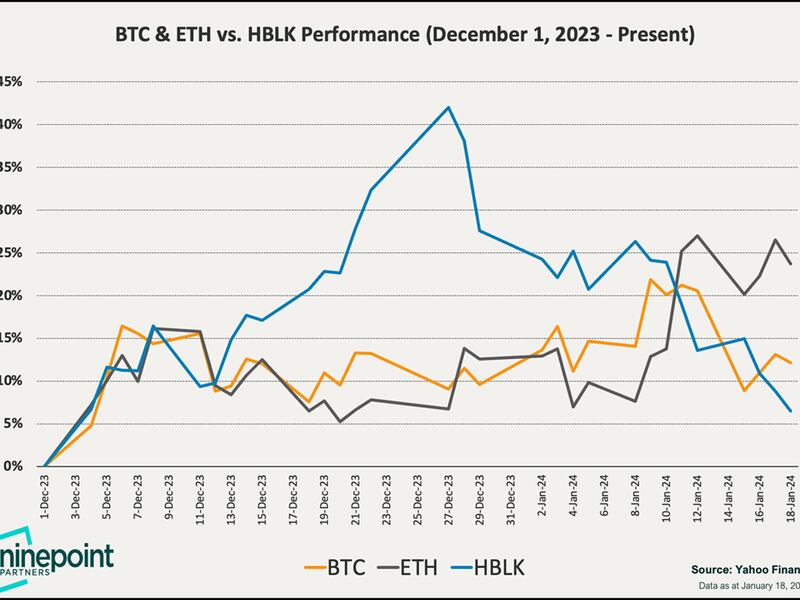Do Bitcoin ETFs Kill the Bull Case for Crypto Equities?

Bitcoin ETFs are finally here. Did the launch live up to the hype? By most measures, the answer is “yes.” In the first six days, the 11 new ETFs gathered nearly $4 billion in assets. As significant, the products collectively traded $10 billion in volume in the first three days.
This was tempered somewhat by outflows from Grayscale’s Bitcoin ETF (GBTC) of around $2.8 billion. Before receiving ETF approval, GBTC was a closed end fund with no redemption option trading at a substantial discount to its fair value, or NAV. So, clearly holders who felt trapped in the product are using the ETF as exit liquidity. Though it was not the biggest ETF launch day in history, as some were expecting, most industry analysts agreed that this was a big deal.
However, the launch turned out to be a sell-the-news event, with bitcoin and companies tied to the industry trading steadily lower over the ensuing week since the launch. I believe this period of weakness will be short-lived. Investors are closely watching the GBTC outflows for signs the selling is drying up. When it does, I expect many of the mainstream investors who have been sitting out the recent volatility will step into the market in size.
You're reading Crypto Long & Short, our weekly newsletter featuring insights, news and analysis for the professional investor. Sign up here to get it in your inbox every Wednesday.
What’s less clear is whether they will also start buying back publicly traded companies with exposure to crypto-assets.
Recall that in December, investors were gobbling up shares in Bitcoin miners like Riot Blockchain, as well as crypto bellwethers like Coinbase. The Harvest blockchain index, which contains many of these stocks, rose 40% in December, outpacing Bitcoin and Ethereum. However, since the launch, those names have given back nearly all the gains (see chart #1), dramatically underperforming.

For years, these companies were the only proxies in the public markets that gave investors exposure to growth in the underlying asset class. Their fortunes rose and fell on the price of Bitcoin. However, with ETFs now readily accessible to anyone, investors will start sharpening their pencils on these businesses and evaluate them on their merits. They won’t just go up because Bitcoin goes up. They also need to be well-run businesses!
Right now, all are being battered in fairly equal measure. But there is a wide gulf in the quality of many of these companies, which will become clear as the dust settles from the post-ETF selloff.
For Coinbase, analysts are concerned that because of the launch of the ETF, the company will see less high-margin fee revenue from retail trading, and that the low-margin revenue from custody and institutional trading for most of these ETFs won’t make up for it.
But, if the asset class continues to rise, retail could come back in a big way. Coinbase has more than 110 million users, mostly in the U.S. (Fidelity by contrast has 42 million) and most of them have been sitting on the sidelines. It is unlikely there will be ETFs for most crypto-assets, so Coinbase will still get to dominate the retail end of the market.
The same cannot be said for Bitcoin miners, which are facing strong headwinds. First, the Bitcoin hashrate, a measure of network security, is near an all-time high, meaning miners need to marshal ever more computing power to earn new rewards. The Bitcoin halving, likely to occur in April, will cut the block reward in half, meaning there will be less to go around. Bitcoin Ordinals, referred to as “NFTs for Bitcoin,” are causing a rift in the community, so miners can’t rely on added fee revenue from these more novel implementations of the network.
Some miners will thrive in this environment, but the days of rising tides in crypto lifting all miner boats are done. This may be a tough pill for some who bought these names hoping an ETF would guarantee them a big gain. But, in the big picture, it’s a positive for the industry. Investors have more choice and companies have more incentive to operate as profitable well run enterprises. Both are signs that crypto is growing up.








